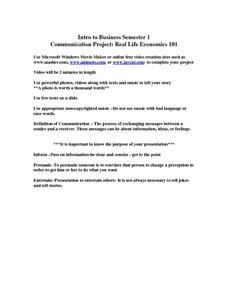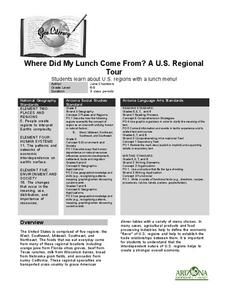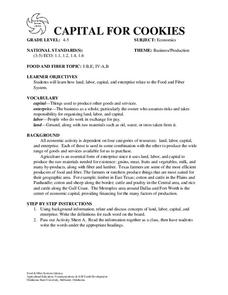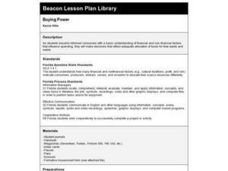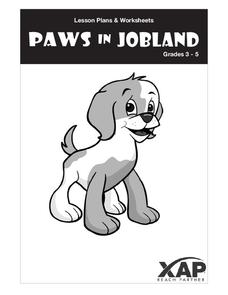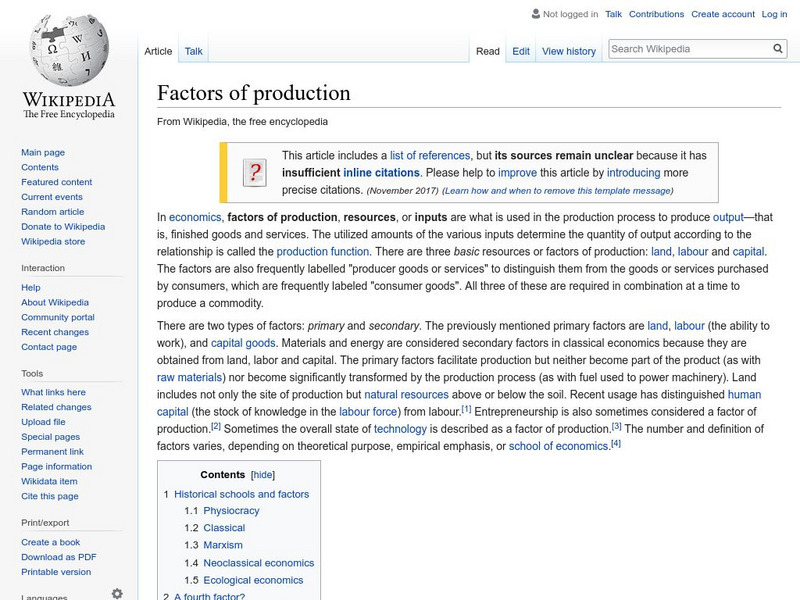Carolina K-12
Factors of Production and Economic Decision-Making
Class members begin this engaging economics activity by listing all the resources used in producing a car and using that example to draw parallels to the four primary factors of production: capital goods, labor, natural resources, and...
Sharp School
Real Life Economics 101
Your learners will take key economic concepts, such as identifying needs versus wants and the four factors of production, and design a video to explain their topic choice to the class. Rather than have one person in charge of dispensing...
Curated OER
Factors of Production
Young scholars identify and define the four factors of production on a diagram. Using a product they use everyday, they write down which natural resources are used to make the product and what type of skills the workers needed to make...
Carolina K-12
Practice Test of Economics
From scarcity and supply and demand to entrepreneurship and the stock market, here you'll find a multiple-choice assessment that includes 34 questions covering all the major concepts of a traditional economics course.
Curated OER
The "Science" of Racism
How can we keep racism out of our society? Analyze the factors that lead to racism today and research previous scientific findings that impacted social policy. Your high school students identify ways to prevent past mistakes from...
Curated OER
Capital for Cookies
Fourth graders find the meaning for capital, land, labor and enterprise and relate them to economics of a place. In this economics lesson, 4th graders form a company to make an agricultural product and look for the resources they will...
Curated OER
How Does News Influence Stock Prices?
Students examine how economic news and business events can change the price of a stock. They see that the unexpected events that benefit or harm the company in turn move the company's stock price up or down.
Curated OER
A Measure of Happiness
Students share opinions about the factors that contribute to or detract from their happiness. They create survey to determine how people in their community measure happiness, and write reflections on the relationship between money and...
Curated OER
Market Structures and Competition
Young scholars review concepts related to market structures and competition. Using supply and demand, they identify what factors cause them to shift and analyze business downward facing demand curves. They compare and contrast the...
Curated OER
Where Did My Lunch Come From? A U.S. Regional Tour
Learners explore the regions from which their food comes. In this social studies lesson, students identify the different agricultural products that are found in the major regions of the United States. Learners create a lunch menu.
Curated OER
What is Economics?
Students define economics and explain the importance and process of making economic choices and decisions. Students participate in four lessons revolving around economics and select activities to complete.
Curated OER
Capital for Cookies
Students explore how land, labor, capital, and enterprise relate to the Food and Fiber System. They write a story about a company they would open in the community, create a company to make an agricultural product and discuss the various...
Curated OER
Predicting Nations at Risk
Students explain the "So what?"-or the international implications-of factors that indicate the developmental status of a nation.
PACER Center
The Peer Advocacy Guide
Teasing, mocking, and disrespect can be the hallmarks in the life of those with disabilities. Disrupt the cycle of abuse with a toolkit designed to turn peers into advocates for all those who are bullied. Everything needed to create a...
Curated OER
Economics Unit 1: Crossword Puzzle
In this economics worksheet, students use the 35 clues in order to fill in the crossword puzzle with the appropriate answers pertaining to economic terminology.
Curated OER
Buying Power
Students use a magazine article/picture to explain consumer spending and discuss the key elements that influence consumer spending.
PBS
Looking for the Bottom
Secondary learners explore the economic indicators and the role they play in the US economy. Written for the 2008 economy, the lesson is adaptable to today's economic situation. Pupils discover economic indicators, analyze...
Curated OER
Development, Trade, Aid
Twelfth graders study the term development. In this Economics lesson, 12th graders explore the role of trade in stimulating development, with particular focus on the role played by the British Government. Students decide how aid...
Curated OER
Natural Resources and Transportation in the United States
Students study thematic maps (included with the lesson) to determine possible relationships. They develop three hypotheses about the relationship. Students choose one of their hypotheses to explain. The explanation is to include reasons...
Curated OER
The Impact of Civil War and Conflict on Identity
Learners view and discuss Powerpoint presentation on Colombian Conflict, examine how civil war impacts the common person, review vocabulary, and complete critical thinking questions with classmates.
Curated OER
Paws in Jobland
Students explore jobs in different countries . In this lesson about different countries through research. Students are broken into groups and given a country to research. Each group is provided with a worksheet with 14 questions to be...
Wikimedia
Wikipedia: Factors of Production
This site gives an overview of economic factors of production (land, labor, capital). Gives detailed descriptions, and links to descriptions of words that might need clarification. Students can make connections as to how these relate to...
Khan Academy
Khan Academy: Introduction to Scarcity and the Economic Way of Thinking
In this exercise, practice what you have learned about learning objective MOD-1.A from the AP Macroeconomics course and exam description. Topics include the definitions of economics, microeconomics, and macroeconomics, positive and...
Khan Academy
Khan Academy: The Production Function
Practice what you have learned about the production function in this four-question exercise.

